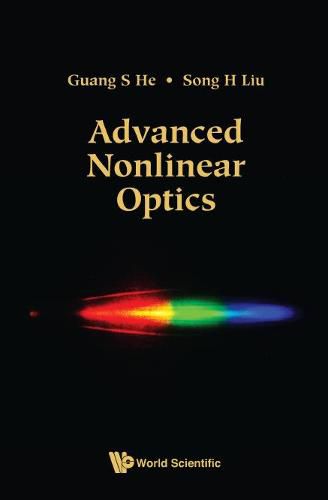Readings Newsletter
Become a Readings Member to make your shopping experience even easier.
Sign in or sign up for free!
You’re not far away from qualifying for FREE standard shipping within Australia
You’ve qualified for FREE standard shipping within Australia
The cart is loading…






Advanced Nonlinear Optics is a revised and updated version of Physics of Nonlinear Optics (1999). This book mainly presents the physical principles of a great number of nonlinear optical effects discovered after the advent of lasers. All these nonlinear optical effects can find their special applications in modern optics and photonics. The major categories of nonlinear optical effects specifically covered in this book are as follows: 1) Second-order (three-wave) frequency mixing; 2) Third-order (four-wave) frequency mixing; 3) Nonlinear refractive-index changes; 4) Self-focusing, self-phase modulation, and spectral self-broadening; 5) Stimulated scattering effects; 6) Optical phase-conjugation; 7) Optical coherent transient effects; 8) Nonlinear spectroscopic effects; 9) Optical bistability; 10) Multi-photon nonlinear optical effects; 11) Fast and slow light effects; 12) Detailed theory of nonlinear susceptibilities.
$9.00 standard shipping within Australia
FREE standard shipping within Australia for orders over $100.00
Express & International shipping calculated at checkout
Advanced Nonlinear Optics is a revised and updated version of Physics of Nonlinear Optics (1999). This book mainly presents the physical principles of a great number of nonlinear optical effects discovered after the advent of lasers. All these nonlinear optical effects can find their special applications in modern optics and photonics. The major categories of nonlinear optical effects specifically covered in this book are as follows: 1) Second-order (three-wave) frequency mixing; 2) Third-order (four-wave) frequency mixing; 3) Nonlinear refractive-index changes; 4) Self-focusing, self-phase modulation, and spectral self-broadening; 5) Stimulated scattering effects; 6) Optical phase-conjugation; 7) Optical coherent transient effects; 8) Nonlinear spectroscopic effects; 9) Optical bistability; 10) Multi-photon nonlinear optical effects; 11) Fast and slow light effects; 12) Detailed theory of nonlinear susceptibilities.